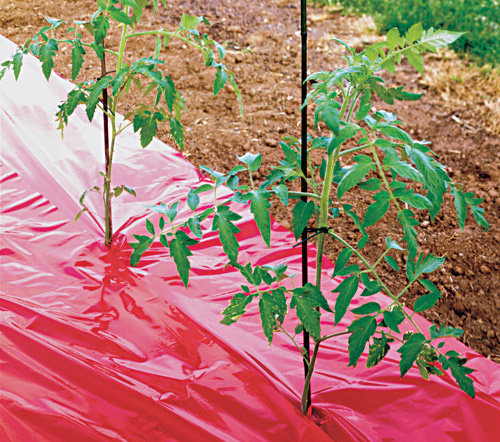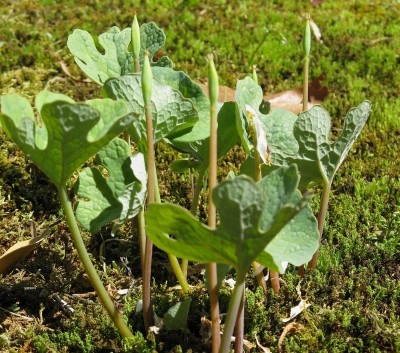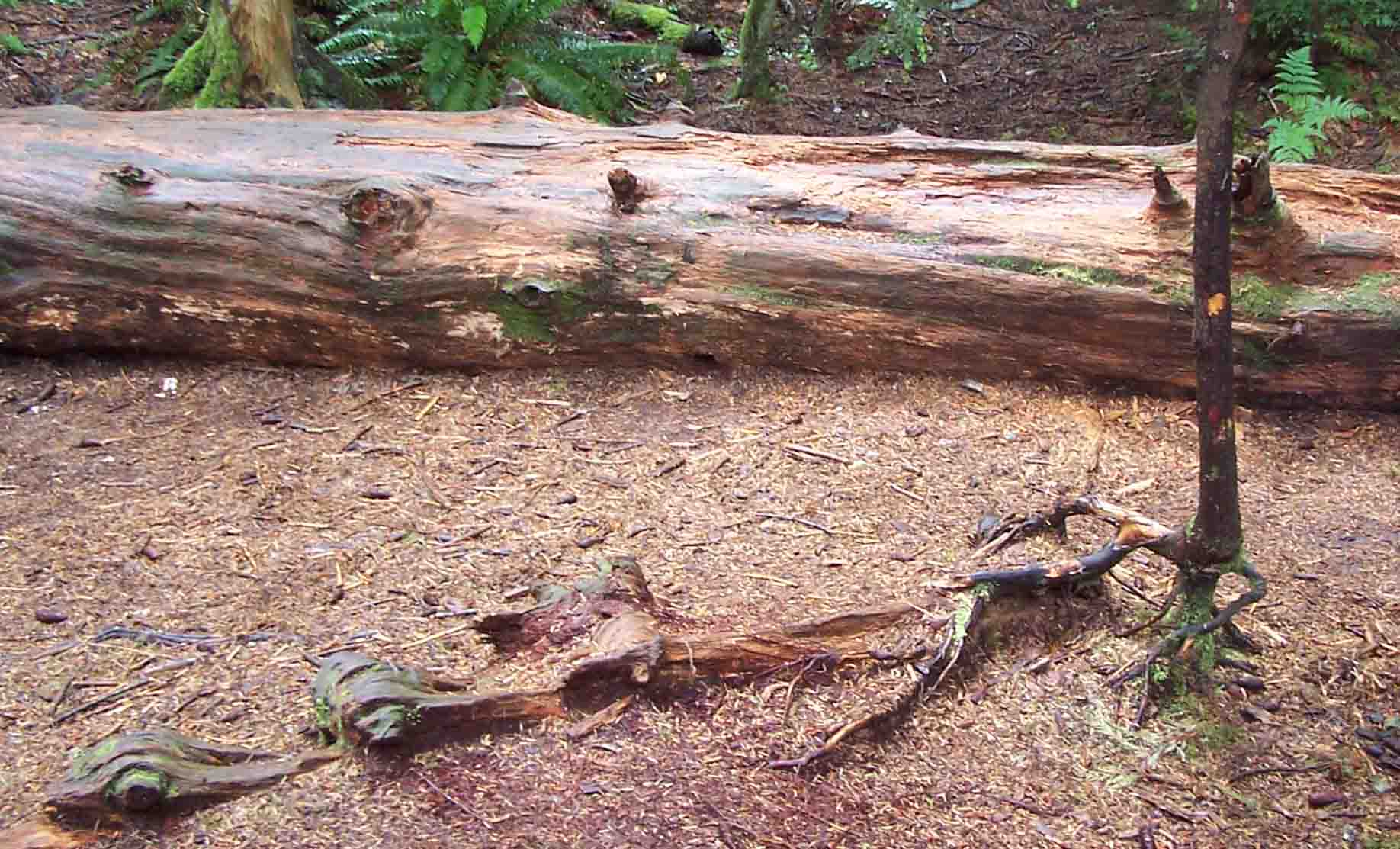Yesterday I got an interesting email about a new product – a Tomato Automator. Briefly, this square, red plastic disk slips around the stem of a tomato plant to suppress weeds and pests. Most intriguingly, we’re told that the color “triggers a natural plant protein that makes tomatoes mature faster and product more fruit.”

Given this is a red product, it’s likely that the protein referred to is phytochrome (literally, “plant pigment”). Phytochrome activity is maddeningly complicated to explain, so we’re going to keep this simple and refer (somewhat inaccurately) to “active” and “inactive” forms of phytochrome. The active form of phytochrome exists when red light is predominant and encourages leaf expansion, chlorophyll development, and other characteristic of plants growing in full sun. In contrast, the inactive form of phytochrome occurs when red light is reduced, either at night (when there’s no light) or in shaded conditions, where far-red light is predominant. (Far-red light occurs just outside our range of visual perception but is absorbed by phytochrome.)
From a practical standpoint, this means a plant can “tell” whether or not its light environment is limited: both red and blue light are absorbed by chlorophyll, so a low level of red light means poor photosynthetic conditions. Under such conditions, “inactive” phytochrome causes many plants to become etiolated (have abnormally long stems) in an attempt to outgrow the shade before it starves from lack of carbohydrate production. In addition, this photosynthetically-poor light environment can also increase fruit set by redirecting resources to seed production rather than foliage – perhaps a plant’s last effort to reproduce before it dies.

OK, now onto the useful application of this information. Several years ago researchers investigated that effect of different colored plastic mulches on tomato production. Again, to keep this simple we’ll just focus on the effect of red mulches. It’s pretty much agreed that red plastic mulch reflects both red and far-red light, increasing not only red light but paradoxically the relative levels of far-red light. Theoretically, this shift would cause tomatoes to put more resources into fruit production, and indeed some studies found this to be the case.
Unfortunately, the phenomenon is not consistent throughout repeated field studies. Some of the other confounding factors are soil temperature (warmer temperature = more growth), insect and disease pressure (both decrease tomato production and are variably influenced by mulch color), and the fact that ethylene production (the plant growth regulator responsible for fruit ripening) is not controlled by phytochrome at all.

So are Tomato Automators worth the trouble? Probably not, especially if you have many plants requiring many automators.


